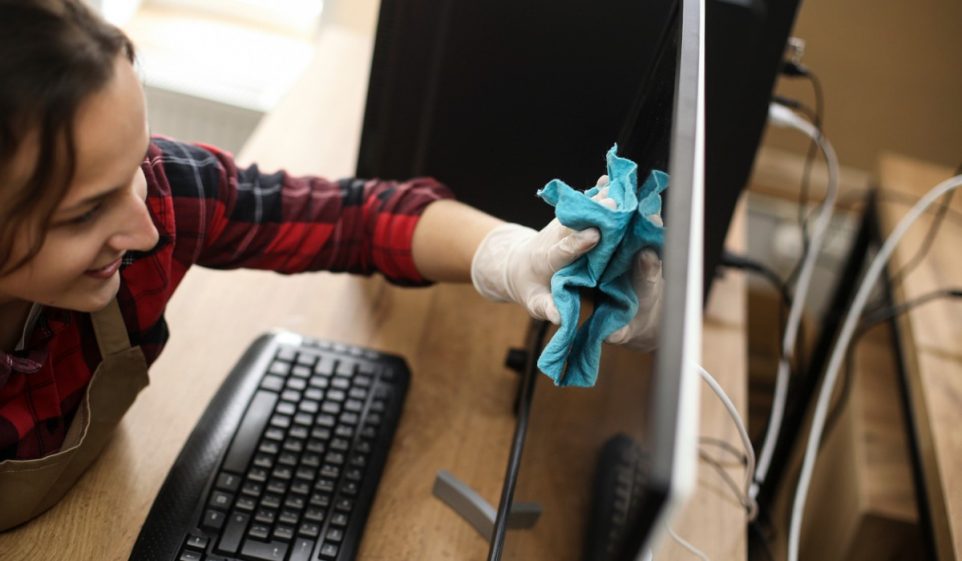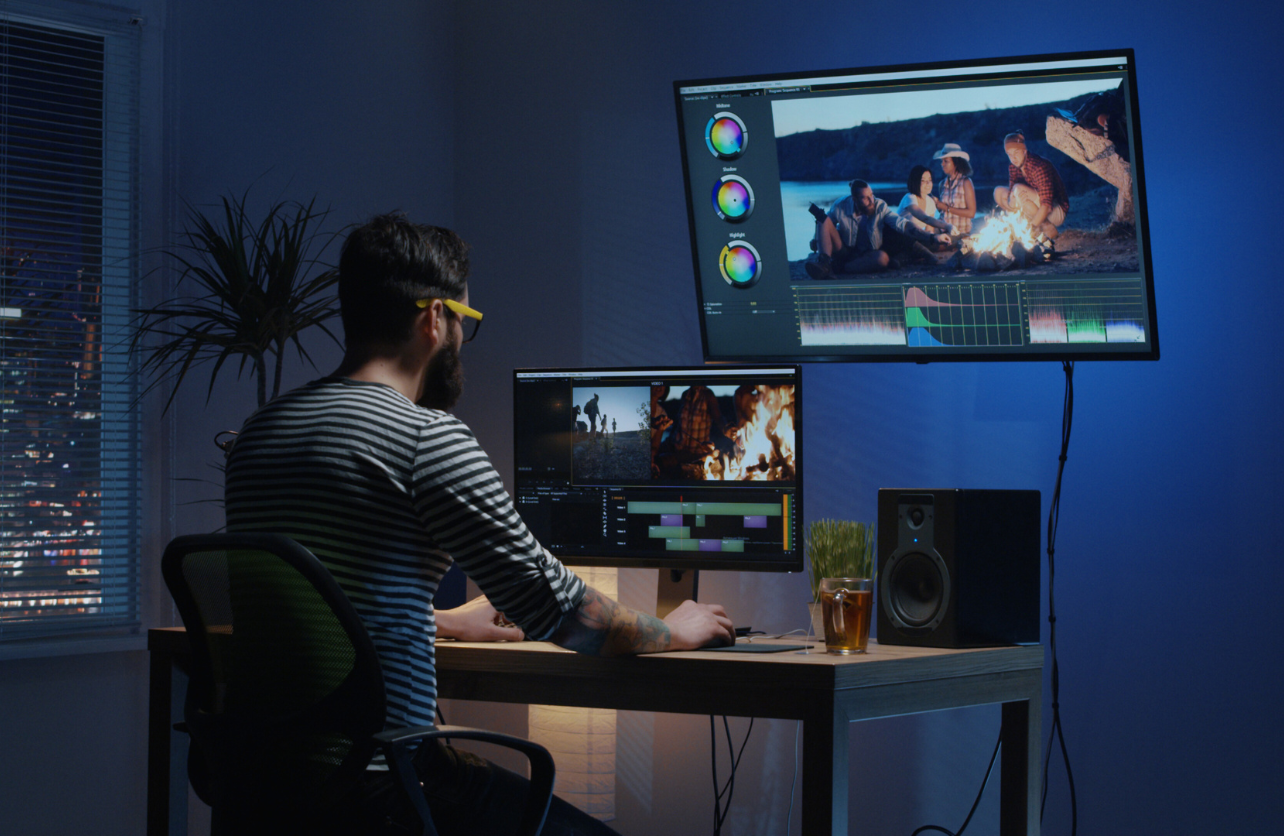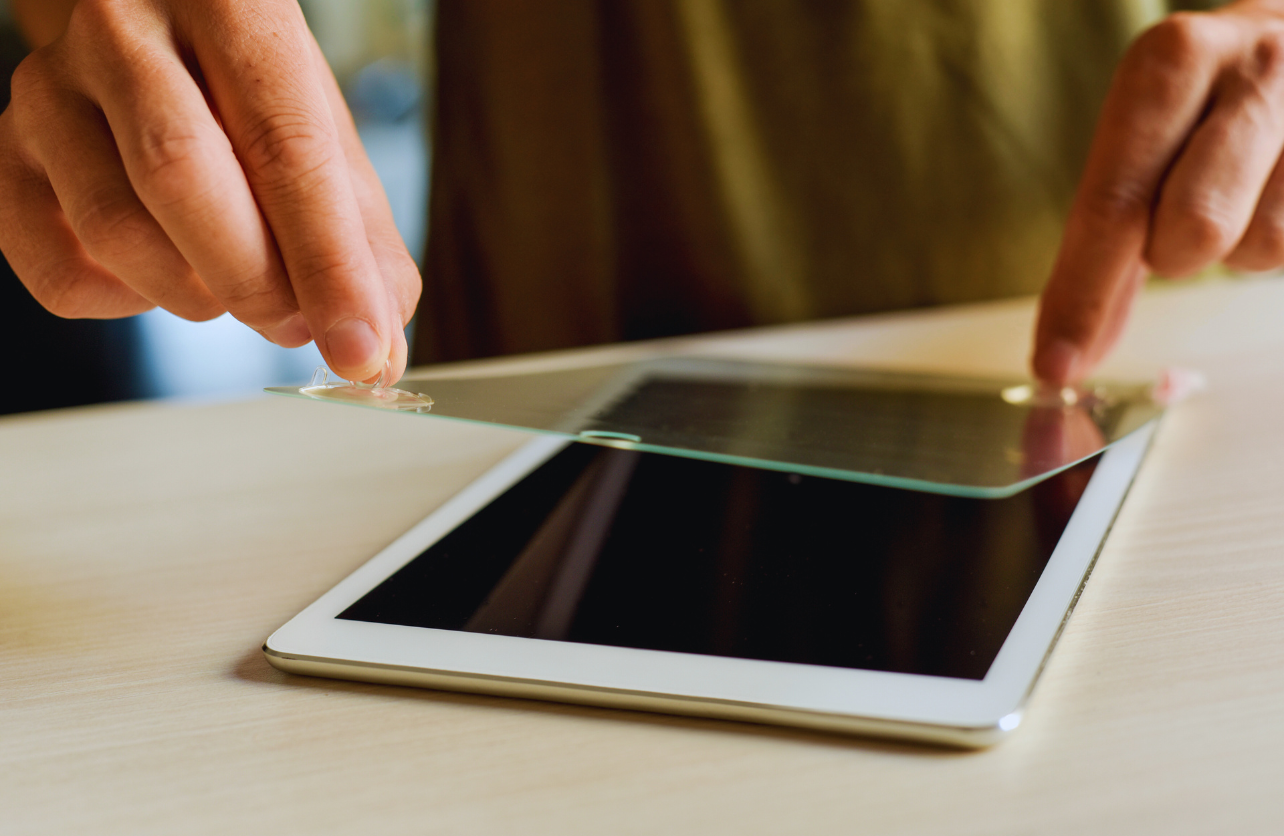How To Clean a Computer Screen Safely

Keeping your computer screen clean is important for maintaining clear visuals and ensuring the longevity of your device. However, it’s important to clean your screen safely to avoid damaging the delicate surface. Here’s a comprehensive guide on how to clean a computer screen effectively, covering everything from the materials you need to the steps for different types of screens.
Why a Clean Screen Matters

Yes, it really is important to keep your screen clean. Here are a few reasons why:
- Improved Visibility: Dust, fingerprints, and smudges can obscure your view and reduce the quality of your display. From personal experience, a lack of clarity can result in more eye strain, which can lead to headaches.
- Hygiene: Screens can harbor bacteria and germs, especially if they are frequently touched.
- Longevity: Proper cleaning can help preserve the screen’s coating and prevent scratches or other damage.
Things You’ll Need for Cleaning

Before you begin cleaning your computer screen, have these things ready:
- Microfiber Cloth: A soft, lint-free cloth is essential for wiping down the screen without scratching it. As tempting as it might be, don’t use paper towels; they are pretty abrasive (in this context) and can leave small scratches.
- Distilled Water: Tap water can contain minerals that might leave streaks or scratches.
- Isopropyl Alcohol (Optional): A solution of 70% isopropyl alcohol mixed with water can be useful for stubborn stains.
- Screen Cleaning Solution (Optional): You can purchase a screen cleaner specifically designed for electronics. Nice to have you like being thorough or haven’t given your screen a proper wipe down in a long time.
- Cotton Swabs: These can help clean corners and edges where dust may accumulate.
- Compressed Air (Optional): Useful for blowing away dust from edges and crevices before wiping.
Steps to Clean Your Computer Screen
Here’s a step-by-step guide to cleaning your computer screen safely:
1. Turn Off Your Computer
Always turn off and unplug your computer before cleaning the screen. This helps you see dirt and smudges more clearly and prevents electrical issues.
2. Remove Loose Dust
Use compressed air to gently blow away any loose dust from the screen and the surrounding area. This prevents the dust from being smeared across the screen when you wipe it.
3. Prepare the Cleaning Solution
If you’re using a DIY cleaning solution, mix equal parts distilled water and isopropyl alcohol. Alternatively, use a commercial screen cleaner. Avoid spraying the solution directly onto the screen; instead, lightly dampen your microfiber cloth.
4. Wipe the Screen
- Use a Microfiber Cloth: Gently wipe the screen with a microfiber cloth, moving in a circular motion to avoid streaks.
- For Stubborn Smudges: Dampen a corner of the cloth with your cleaning solution and gently rub the affected area.
- Avoid Excessive Pressure: Pressing too hard can damage the screen, so use a light touch.
5. Clean Edges and Corners
Use cotton swabs dipped in distilled water to clean the edges and corners of the screen. Be careful not to let any liquid seep into the gaps.
6. Dry the Screen
Once the screen is clean, use a dry part of the microfiber cloth to gently buff the screen and remove any remaining moisture or streaks.
Special Considerations for Different Types of Screens

Different types of computer screens may require specific cleaning techniques:
LCD and LED Screens
- Avoid Ammonia-Based Cleaners: These can damage the anti-glare coating on LCD and LED screens.
- Use Gentle Products: Stick to distilled water and a microfiber cloth, or a screen cleaner designed for LCDs.
Touch Screens
- Frequent Cleaning: Touch screens are prone to fingerprints and may require more frequent cleaning.
- Avoid Harsh Chemicals: To prevent damage to the sensitive surface, use a mild cleaning solution and a soft cloth.
Glossy Screens
- No Pressure: Glossy screens can show scratches more easily, so be gentle when wiping.
Preventive Measures for Maintaining a Clean Screen

To keep your screen cleaner for longer, consider these preventive measures:
- Use a Screen Protector: This can help reduce fingerprints and scratches, especially on touch screens.
- Regular Dusting: Lightly dust the screen with a microfiber cloth weekly to prevent buildup.
- Avoid Touching the Screen: Remind yourself and others to avoid touching the screen to minimize smudges and fingerprints.
- Keep Food and Drinks Away: Prevent spills and splatters by keeping food and beverages away from your computer. Also, keep your phone out of the danger zone if you’re eating something messy or easy to spill.
Troubleshooting Common Screen Issues
Even with regular cleaning, you might encounter some common screen issues. Here’s how to address them:
Streaks or Smudges
Use a slightly damp microfiber cloth to buff out streaks, and ensure you’re using distilled water to avoid mineral deposits.
Scratches
Light scratches might be minimized with a specialized screen polish, but deep scratches usually require professional repair or replacement.
Persistent Spots
For stubborn spots, apply a small amount of cleaning solution directly to a cloth and gently rub the spot. Avoid using sharp objects or abrasive pads.
Finishing Up
Cleaning your computer screen safely requires the right tools and techniques, but it’s a simple task that can significantly improve your device’s performance and longevity. Incorporating these cleaning steps into your regular maintenance routine ensures a clear and vibrant display every time you use your computer. Remember to handle your screen gently and avoid harsh chemicals to keep it in top condition.
Your Trust, Our Core Commitment
At Rising Tech, earning and maintaining your trust is the cornerstone of our mission. We're dedicated to transparency, impartiality, and the relentless pursuit of truth in every article, review, and recommendation we publish. Our commitment to these principles ensures that you, our valued reader, are always equipped with reliable and unbiased information. Let us be your trusted guide in the ever-evolving world of technology.